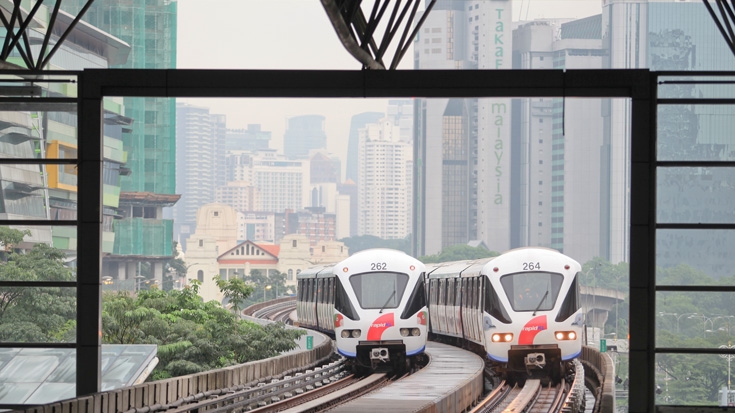Key Findings
Malaysia’s growth is projected to maintain a healthy pace.
- Malaysia’s economic growth projection: 4.7% (2015) and 5% (2016).
- Malaysia’s exports, including the long-embattled E&E (electronics/electrical) sector, showed signs of recovery in 2014 (up 5.2%), but slowed in early 2015.
- Private consumption is expected to moderate to a still-robust 5.9% (2015) before rebounding to 6.4% (2016) as consumers adjust to the Goods and Services Tax (GST).
- The introduction of GST and elimination of fuel subsidies has helped Malaysia weather the oil price shock, but further reforms are required to ensure medium-term fiscal targets are met.
Congestion threatens to dampen the benefits of urbanization
- Rapid urbanization boosted productivity and access to economic opportunity, helping raise incomes and reduce poverty.
- But urban sprawl, high motorization rates and inadequate public transport led to congestion and low usage of public transport.
- Only 17% of commuters in Kuala Lumpur use public transport compared to 62% in Singapore and 89% in Hong Kong.
- Residents of Greater Kuala Lumpur spend more than 250 million hours a year stuck in traffic.
- The total cost of traffic in Greater Kuala Lumpur is estimated at 1.1 - 2.2% of GDP in 2014.
The lack of unified planning is a key obstacle to the delivery of efficient urban transport
- Current planning and delivery practices for urban transport are still not sufficiently robust to handle the underlying complexity of Malaysia’s cities as they are scattered across a number of different entities.
Malaysia’s urban transport system can address these challenges more robustly by establishing metropolitan-level lead agencies
- Lead urban transport agencies at the metropolitan level would oversee integrated planning, maintenance and service delivery of all modes of urban transport.
- The introduction of new financial instruments such as taxes, user charges and fees can help finance a lead transport agency with the right mandate sustainably.
- Policies to promote the use of public transport should be aligned with policies that discourage car use in congested areas.

